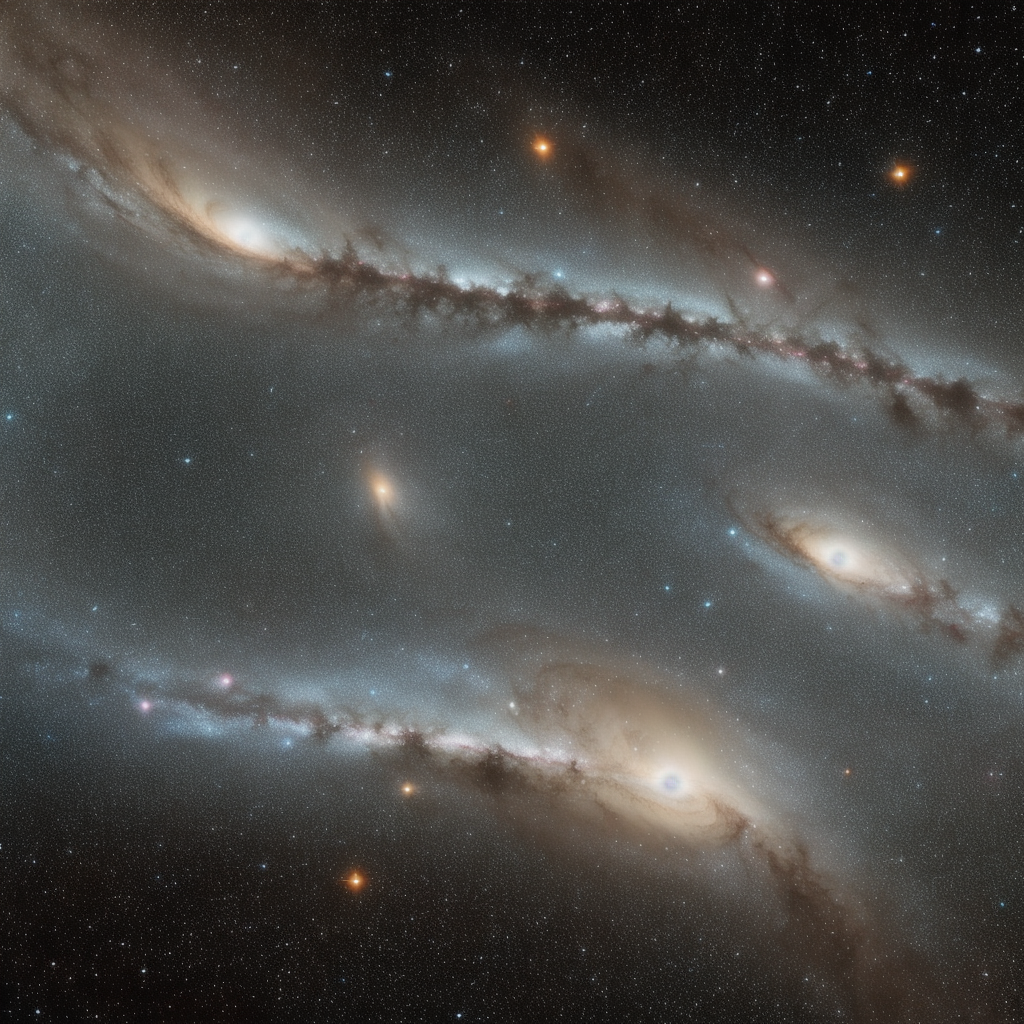
A Deluge of Black Holes: The Early Universe Is Haunted
Key Points
- Contrary to previous theories, black holes are abundant in the early universe.
- The reliably influential James Webb Space Telescope unveiled the surprising discovery.
- Black holes aren’t just the universe’s mischievous spectators, they’re active participants.
- Astronomers will need to adjust theories on the formation of early galaxies and associated black holes.
- This revelation infers that black holes played a significant role in the formation of the universe.
- The James Webb Space Telescope continues to challenge and redefine our perception of the cosmos.
Early Universe: Now Featuring More Stage Time for Black Holes
The exotic theater known as the cosmos has dished yet another curveball. We used to believe that like the understudies in a grand theatrical play, black holes were supposed to just lurk around in the early universe, having minimal-to-no impact on the “actual” stars (quite literally, in this case). The James Webb Space Telescope, however, begs to differ. It seems our onyx-hued voids weren’t content being mere wallflowers, and instead managed to weasel their way onto center stage, a lot earlier than we’d thought.
When spying through the cosmic keyhole of the telescope, we have stumbled upon not just a handful, but an unexpected cluster of these gravitational misfits. Picture walking into a party expecting a quiet few and instead finding it teeming with guests grinding away to “Cotton-Eye Joe”.
Re-writing the Cosmic Rulebook
The thing is, these revelations aren’t just leaving astronomers scratching their heads in befuddlement. No, they’re also furrowing their brows, poised to rethink the theories assigned to the early evolution of galaxies and linked black holes. Yes, the black holes seem to be abundant, but their baffling presence also prompts questions about their intriguingly swift formation.
Metaphorically speaking, these black holes just accelerated from being the back-room janitors to board members in the universal accounts of the matter (and anti-matter). What ladders (or wormholes) did they climb, we wonder?
The Webb is Spinning some Serious Tales
What’s more, this isn’t the first time the James Webb Space Telescope has thrown astronomers into a reconsidering frenzy. It continues to be instrumental in pushing boundaries and elbowing us out of our comfort zones as it challenges our perception of the universe.
Hot Black Hole Takes
In closing, our universe is evidently a space that doesn’t play by the book, and black holes are far from the silent bystanders we once painted them as. Instead, they’re the uproarious party-goers who simply won’t leave.
This pivotal discovery indeed sets the floor for a re-imagination of the laws of space and time that have traditionally guided our understanding of the universe. It feels as if black holes, in their renowned silent darkness, were merely waiting for their time to shine (or not shine. It’s complicated).
Yes, the universe continues to humbly remind us that there’s more than what meets our terrestrial eyes, and the James Webb Space Telescope proves to be a steadfast companion in this thrilling roller-coaster journey into the unknown. This episode also reminds us, with a wink, that sometimes the supporting characters have the most interesting stories to tell.
So next time we look up at the stars, we’ll remember that even in the silent, seemingly sparse voids of space, there may be a black hole or two, winking right back, beaming with stories of an ancient, exciting past.